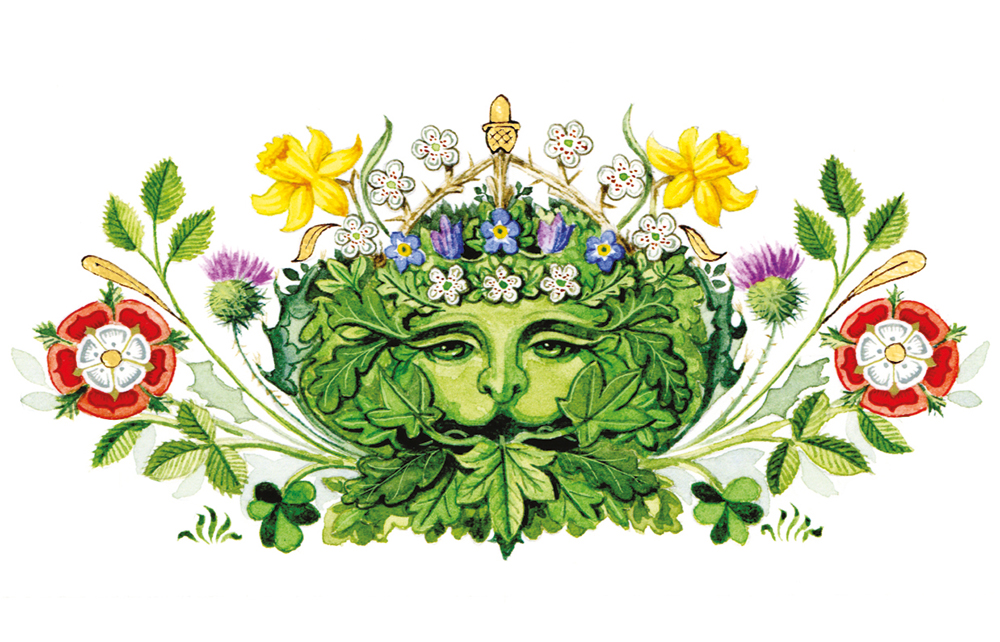All hail our pagan King! The time has come to lay down your crosses and take up the bough of oak. Britain is to return to the old ways — at least if you are to believe the conspiracy theorists, who were distressed to see, on the bottom of the coronation invitation sent out last week, the face of a green man staring back at them. His eyes are bright, his mouth exudes fronds of ivy — the green man calls to us.
Depending on your particular view of the world, his inclusion is either an affront to Christian decency or a jolly salute to our monarch’s peculiarities. The green man is a playfully sinister envoy of the otherworldly. His face, either made entirely of leaves or a fleshy human screaming forth foliage, is carved into hundreds of parish churches. The King will pass under a foliate head when he walks through Westminster Abbey’s quire screen on coronation day.
The green man symbolizes fertility and rebirth. Examples are found across Europe: there is a green man in the sixth-century palace of Constantinople; others in the Freiburg Minster spire. One theory has it that the symbol emerged during the Neolithic period, an element of the matriarchal religion of the Danube basin. From there, the green man made his way into Celtic religion and perhaps the cult of Dionysus, whose adherents would daub their faces with wine and beards of ivy.
There are stories, too, of green men in English history. In the twelfth century, it is said that fishermen recovered a green man from the waters off the Suffolk coast. He was imprisoned in Orford Castle, a few miles from where radar was invented, and refused ever to speak. Nearby, in Woolpit, there is a tale of two green children who appeared in the village, speaking an unknown language and refusing to eat anything but broad beans. The boy died, but the girl eventually learned English, claiming to come from an entirely green world called “St. Martin’s land.”
How did this peculiar symbol make its way into England’s churches? The author Paul Kingsnorth has an alluring theory. The Norman invasion did not end with 1066; Anglo-Saxon guerrillas spent years fighting against the invading force, kidnapping noblemen and attacking William’s soldiers. These fighters were known by the Normans as the silvatici, meaning “wild” or “from the forest.” In English, they were called “the green men.”
When the invaders tore down the old wooden Anglo-Saxon churches, the native stonemasons charged with rebuilding them in the Norman style hid symbols of resistance in the medieval architecture. These green men would watch the new Norman lords, these foreigners who had destroyed the ancient rights of England. One rebel was a landowner known as Hereward, based on the Isle of Ely within the marshy fenland of East Anglia. He was eventually defeated in 1071. The Green Man is still a particularly popular pub name in that part of the world.
I asked Andrew Jamieson, who drew the coronation invitation, how the green man had come about. He told me it was: “My choice entirely. The green man seemed appropriate as he is a symbol of spring and new beginnings and is a nod to His Majesty’s love of nature.” When I mentioned the rebellious history of the green man, I heard nothing back. A mystery befitting our esoteric monarch.
This article was originally published in The Spectator’s UK magazine. Subscribe to the World edition here.

























